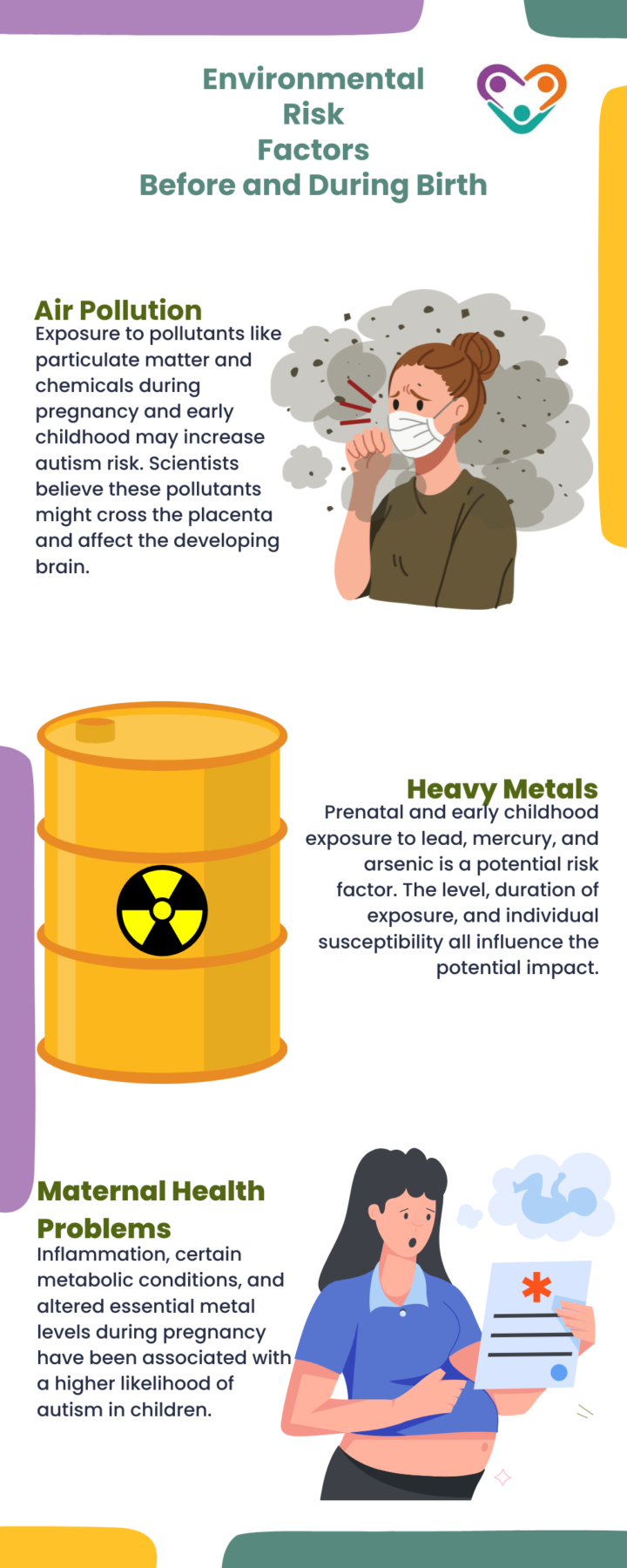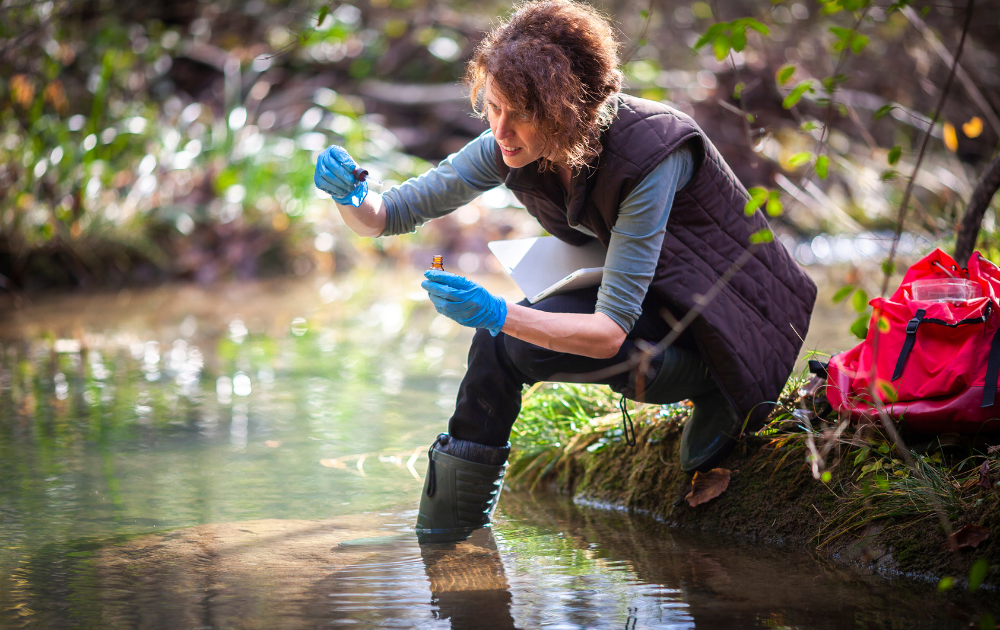Autism is a complex neurodevelopmental disorder, and while the exact causes are not yet fully understood, research has shown that genetic factors play a significant role. In this article, we will explore some of the factors associated with autism.
Genetic Influences
Autism Spectrum Disorder (ASD) shows a strong link to genetics, as evidenced by the increased risk for siblings of autistic individuals. Studies reveal that siblings of autistic children have a 20% chance of being autistic themselves, which is a significant jump compared to the general population.
This highlights the role of genes in autism development, but it’s important to remember that genetics isn’t the sole factor. The environment likely plays a role too, explaining why not all siblings develop the condition.
Another interesting twist comes from the sex of the firstborn autistic child. Families with a girl as their first autistic child have a 50% higher chance of having another autistic child compared to families where the first autistic child is a boy.
This sex-specific effect suggests that genes might interact differently depending on the child’s sex. Scientists are actively researching the underlying mechanisms to understand how these interactions influence autism risk.
The number of autistic siblings within a family also provides clues. Families with multiple autistic children have a higher recurrence rate, around 37%, compared to families with just one autistic child (21%).
This suggests a stronger “genetic load” in families with multiple cases. By understanding the specific genes involved in this increased risk, researchers can gain valuable insights into the inheritance patterns and mechanisms behind autism.
The search for autism-linked genes is ongoing. Researchers are using powerful genetic analysis tools to identify common and rare variations associated with the disorder. This information can help us understand the biological underpinnings of autism and potentially lead to the development of new personalized interventions.
Environmental Influences
While genetics play a significant role in autism, environmental factors also contribute to its development. This section delves into the critical prenatal and birth factors, as well as potential environmental exposures that may increase the risk of ASD.
Prenatal and Birth Factors
Research suggests a mother’s health during pregnancy may be linked to the risk of autism in her child. Conditions like inflammation, autoimmune disorders, and infections during pregnancy, such as rubella or cytomegalovirus, may be contributing factors.
These can trigger the mother’s immune system, potentially affecting fetal brain development. Additionally, pre-eclampsia, a pregnancy complication characterized by high blood pressure, has also been associated with an increased risk of autism.
Difficult deliveries, premature birth, and oxygen deprivation during birth are also being studied for their potential role. These complications can disrupt the delicate process of brain development, potentially impacting how brain circuits form and function.
However, there’s also promising research on the positive impact of prenatal vitamins. Studies funded by the National Institutes of Environmental Health Sciences (NIEHS) suggest that taking prenatal vitamins during pregnancy may lower the risk of autism.
These vitamins provide essential nutrients crucial for healthy fetal development. They might also offer protective effects for those exposed to environmental contaminants during pregnancy, although more research is needed to understand this connection.

Environmental Exposures
Exposure to heavy metals like lead, mercury, and arsenic before birth and during early childhood has been linked to a higher risk of autism. These metals can be found in contaminated air, water, and even certain foods.
Studies suggest that prenatal and early childhood exposure to pesticides may be a risk factor for ASD. This is concerning as these chemicals are widely used in agriculture and may be present in our food and environment.
Exposure to particulate matter and other airborne chemicals during pregnancy and early childhood may also increase the risk. Scientists believe these pollutants can cross the placenta and affect the developing brain.
It’s important to note that these are just potential risk factors, and not everyone exposed to them will develop autism. The interplay between genetics and environment is complex, and individual susceptibility likely plays a role.
How Genes and Environment Interact
In some cases, the environmental trigger might not be strong enough to cause a problem on its own. But when combined with a specific genetic makeup, it could push the system over the edge, tipping the scales towards autism development.
This intricate dance between genes and environment isn’t a simple on/off switch. It’s more like a dimmer switch. Genes determine the potential for a certain brain function, and the environment can influence how strong that function becomes.
For example, a gene might influence social interaction skills. Exposure to a supportive and nurturing environment could strengthen those skills, while a stressful or isolating environment could weaken them.
Scientists are actively researching this fascinating interplay. They’re looking at how specific environmental factors might interact with different genes to influence autism risk. This research holds immense promise.
Recent Research on Environmental Risk Factors
Funded by the National Institutes of Environmental Health Sciences (NIEHS), several large-scale studies are delving deeper into environmental contributors to ASD. The CHARGE (Childhood Autism Risks from Genetics and Environment) study, for example, stands out for its comprehensive approach.
Examining over 1,800 children, CHARGE investigates the interplay between genetics and a wide range of environmental factors. The study has identified potential risk factors including exposure to pesticides, air pollution, and maternal health problems such as immune system dysfunction or metabolic conditions.
Building on this knowledge, studies like MARBLES (Markers of Autism Risk in Babies – Learning Early Signs) and EARLI (The Early Autism Risk Longitudinal Investigation) focus on early detection and environmental influences. MARBLES closely monitors infants with high autism risk due to older siblings with ASD.
By studying these infants, researchers aim to understand how environmental factors during pregnancy and early childhood might contribute to autism development. Similarly, EARLI follows high-risk infants over time, examining environmental exposures like air pollution, pesticides, and maternal health conditions.
These studies, along with others, highlight several environmental risk factors before and during birth:

By continuing to investigate environmental contributors and their interaction with genetics, NIEHS-funded studies are paving the way for a deeper understanding of autism. This knowledge can inform future strategies for prevention, early detection, and intervention.
If you’re seeking expert support, Golden Care offers ABA therapy in NYC, Indiana, New Jersey, Georgia, and Florida. Contact us today to discover how our high-quality services can make a difference in your child’s life.



